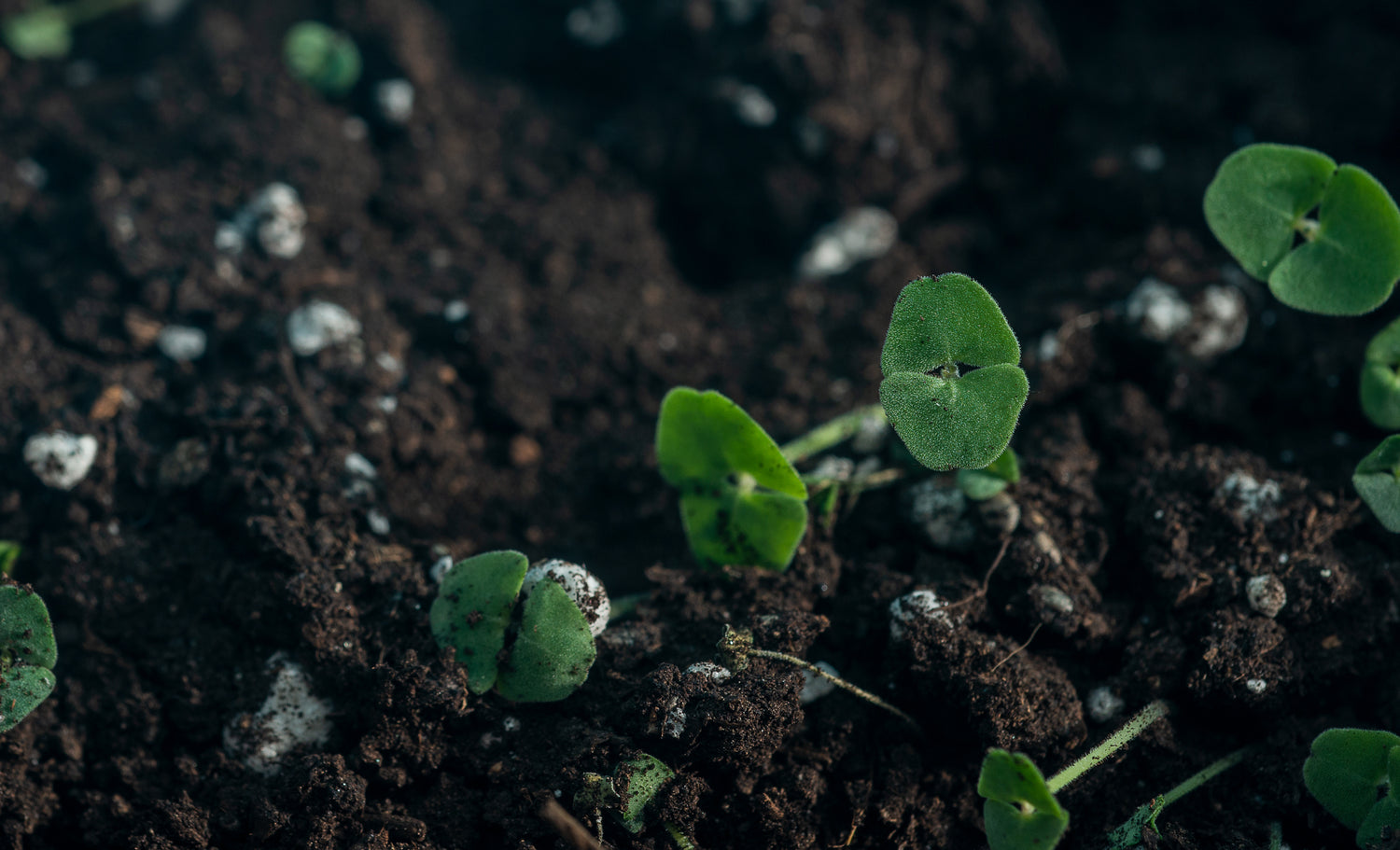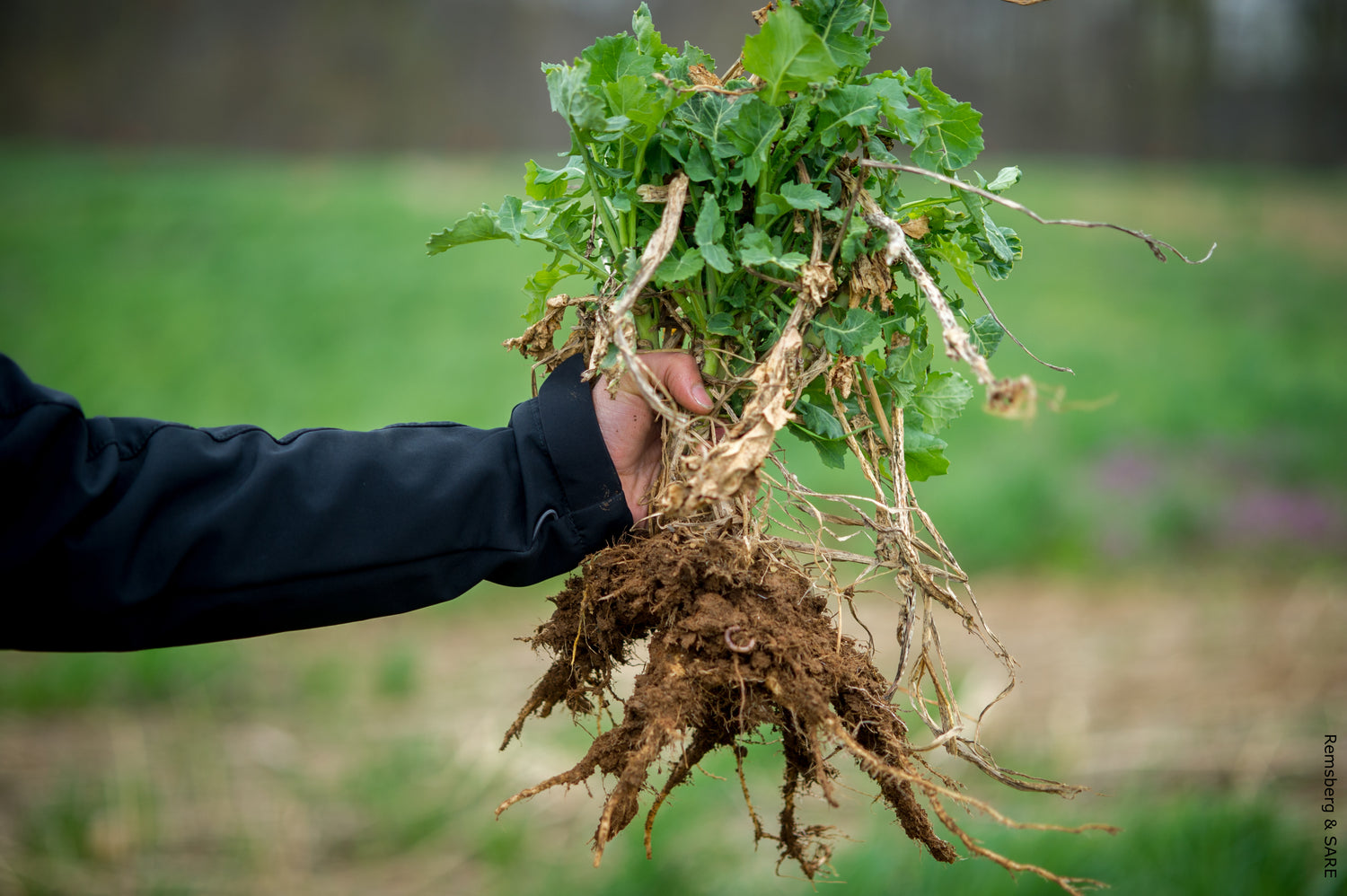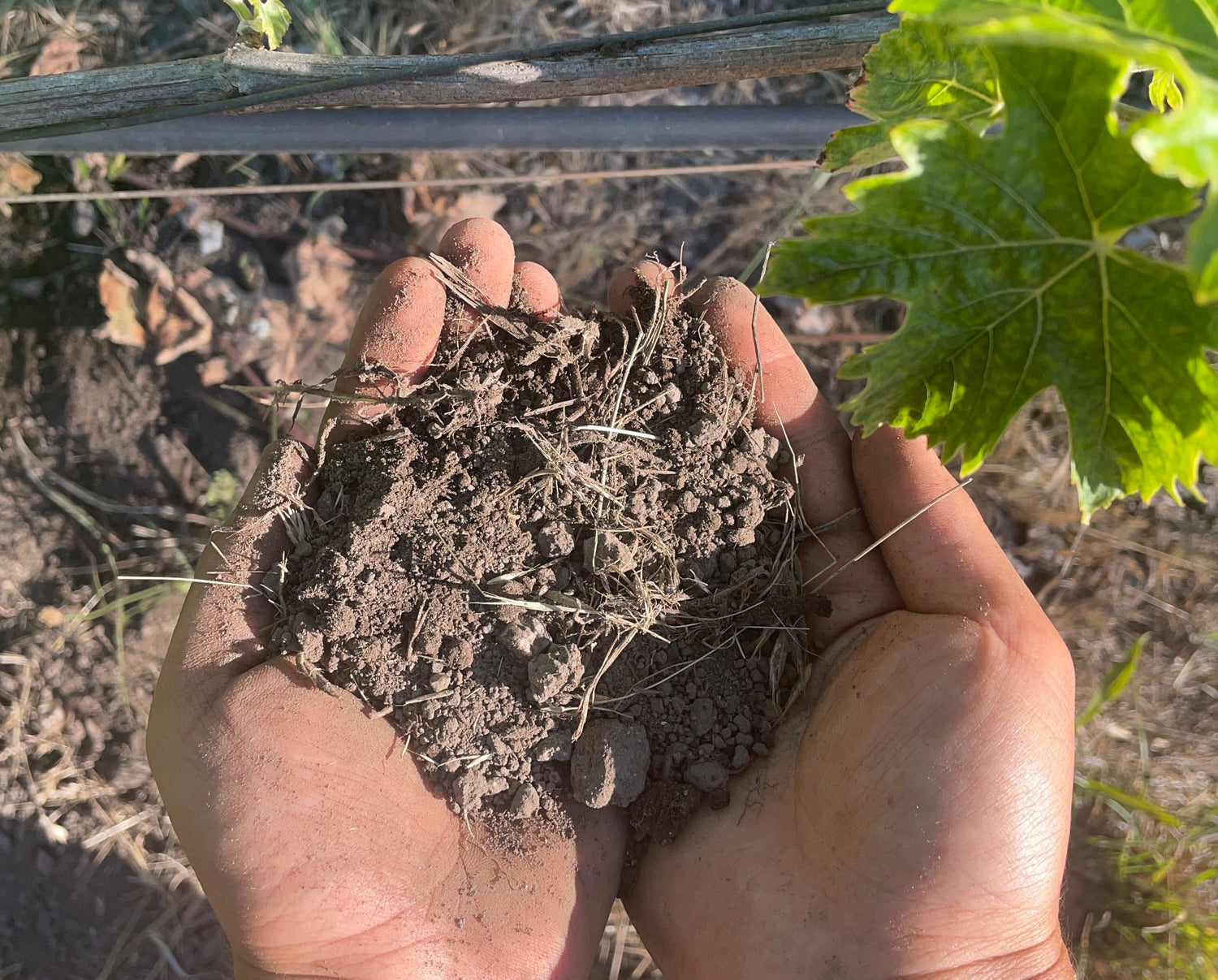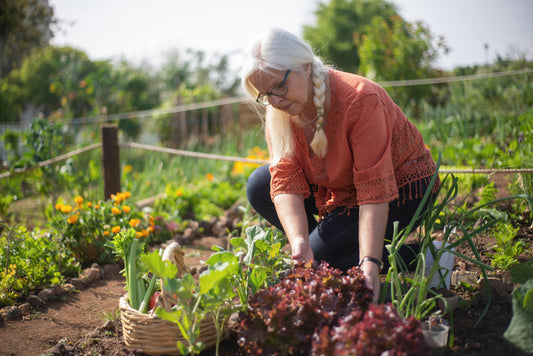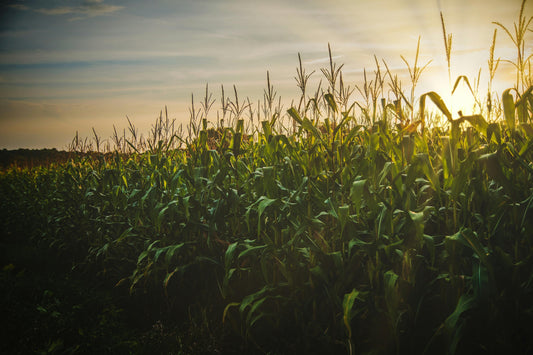Organic gardening represents a commitment to sustainable agricultural practices that work in harmony with natural soil ecosystems. Understanding soil health fundamentals is essential for creating thriving gardens that produce nutritious food while supporting environmental sustainability and biodiversity.
Healthy organic garden soil functions as a living ecosystem containing beneficial microorganisms, balanced nutrients, optimal structure for plant growth, and natural pest resistance through biological diversity and symbiotic relationships.
The Importance of Soil in Organic Gardening: Building Living Soil Systems
Understanding Living Soil Ecosystems
At the foundation of successful organic gardening lies the concept of living soil—a complex, dynamic ecosystem teeming with billions of microorganisms that create the biological foundation for healthy plant growth. Unlike conventional farming approaches that often rely on synthetic inputs, organic gardening works in partnership with natural soil processes to create sustainable growing systems.
Living soil contains an intricate web of beneficial bacteria, fungi, protozoa, nematodes, arthropods, and other microorganisms that continuously interact to cycle nutrients, improve soil structure, and protect plants from diseases. According to the USDA Natural Resources Conservation Service, a single teaspoon of healthy soil can contain more microorganisms than there are people on Earth, highlighting the incredible biological diversity that supports plant life.
Research from the Rodale Institute demonstrates that organic farming systems build soil organic matter over time while conventional systems often deplete it, making the living soil approach essential for long-term agricultural sustainability and productivity.
The Science of Soil Biology in Organic Systems
Soil biology forms the engine that drives nutrient cycling, disease suppression, and plant health in organic gardening systems. Understanding these biological processes enables gardeners to work with natural systems rather than against them.
Beneficial Microorganisms and Their Functions
Beneficial bacteria in healthy soil perform multiple essential functions including nitrogen fixation, phosphorus solubilization, and production of plant growth hormones. Rhizobium bacteria form symbiotic relationships with leguminous plants, converting atmospheric nitrogen into plant-available forms that can supply 50-300 pounds of nitrogen per acre annually in agricultural systems.
Mycorrhizal fungi create extensive underground networks that extend plant root systems, accessing nutrients and water from a much larger soil volume. Research published in the journal Nature shows that mycorrhizal associations can increase plant nutrient uptake by 100-1000% while improving drought tolerance and disease resistance.
Beneficial soil bacteria including Bacillus and Pseudomonas species produce natural antibiotics and antifungal compounds that protect plant roots from soil-borne pathogens, reducing disease pressure without synthetic pesticides.
Soil Food Web Dynamics
The soil food web represents the complex network of feeding relationships between soil organisms, from bacteria and fungi through protozoa, nematodes, arthropods, and larger organisms. Each level of this food web contributes to nutrient cycling and soil health through predation, decomposition, and symbiotic relationships.
According to soil food web research, bacterial-dominated soils typically support annual crops and grasses, while fungal-dominated soils better support perennial crops, trees, and shrubs. Understanding these relationships helps organic gardeners select appropriate crops and management practices for their soil conditions.
Natural Nutrient Cycling and Plant Nutrition
Organic gardening relies on natural nutrient cycling processes mediated by soil microorganisms to provide plants with essential elements for growth and productivity. This biological approach creates more stable and sustainable nutrition than synthetic fertilizer applications.
Macronutrient Availability Through Biological Processes
Nitrogen availability in organic systems depends on microbial decomposition of organic matter and biological nitrogen fixation by specialized bacteria. Organic matter decomposition releases nitrogen gradually throughout the growing season, matching plant uptake patterns and reducing nutrient losses to groundwater or surface water.
Phosphorus becomes available through organic acid production by plant roots and soil microorganisms that solubilize mineral phosphorus compounds. Mycorrhizal fungi excel at accessing phosphorus from soil sources unavailable to plant roots alone, making this often-limiting nutrient more available to crops.
Potassium cycling occurs through weathering of mineral particles accelerated by organic acids and through decomposition of plant residues that typically contain 1-4% potassium by weight.
Micronutrient Availability and Soil pH Management
Soil pH significantly affects nutrient availability, with most vegetables growing best in slightly acidic to neutral conditions (pH 6.0-7.0). The Penn State Extension recommends regular pH testing since organic matter decomposition and plant nutrient uptake can gradually change soil pH over time.
Micronutrients including iron, zinc, manganese, and copper become more available in slightly acidic soils, while calcium and magnesium availability increases in neutral to slightly alkaline conditions. Organic matter decomposition releases chelated forms of micronutrients that remain available to plants across a wider pH range than mineral forms.
Building and Maintaining Soil Structure
Soil structure—the arrangement of soil particles into aggregates—determines water infiltration, drainage, aeration, and root penetration. Organic gardening practices significantly improve soil structure through biological and physical processes.
Organic Matter and Aggregate Formation
Soil organic matter acts as the binding agent that holds soil particles together into stable aggregates. Decomposing organic matter produces sticky substances that cement soil particles, while living roots and fungal hyphae create physical networks that stabilize soil structure.
Research from Cornell University's Soil Health Lab shows that increasing soil organic matter from 2% to 4% can double the soil's water-holding capacity while improving drainage and reducing compaction problems.
Well-aggregated soils contain approximately 50% pore space, with larger pores allowing water drainage and air movement while smaller pores retain water for plant use. This balanced pore structure supports both plant roots and soil organisms.
Water Management in Organic Soils
Organic soils typically have superior water management characteristics compared to chemically managed soils. High organic matter content increases water infiltration rates, reduces surface runoff and erosion, and improves drought tolerance through enhanced water storage capacity.
The National Drought Mitigation Center notes that each 1% increase in soil organic matter can increase water storage capacity by approximately 20,000 gallons per acre, making organic soil management a critical drought adaptation strategy.
Biodiversity and Ecosystem Resilience
Organic gardening systems typically support much higher biodiversity than conventional systems, both above and below ground. This biodiversity creates resilient ecosystems that naturally regulate pests and diseases while supporting beneficial organisms.
Plant Diversity and Companion Planting
Diverse plantings in organic gardens support beneficial insects, provide habitat for natural predators, and create biological pest control through companion planting relationships. Certain plants produce natural compounds that repel pests or attract beneficial insects that control harmful species.
Research from the USDA Agricultural Research Service demonstrates that diverse agricultural systems experience fewer pest outbreaks and require fewer interventions than monoculture systems, highlighting the importance of planned biodiversity in organic gardens.
Cover crop diversity provides multiple benefits including nitrogen fixation by legumes, soil improvement by deep-rooted species, and pest disruption through crop rotation and biological diversity.
Natural Pest and Disease Management
Healthy soil biology provides the first line of defense against plant diseases through competitive exclusion, antibiotic production, and enhanced plant immunity. Beneficial soil microorganisms colonize plant roots and create protective barriers against pathogenic organisms.
Organic gardens rely on prevention through soil health, plant selection, timing, and biological controls rather than reactive treatments. This approach creates more stable, long-term pest management while protecting beneficial organisms essential for garden ecosystem health.
Essential Organic Matter Management Practices
Successful organic gardening depends on continuous organic matter addition and management to feed soil biology, improve soil structure, and maintain nutrient cycling processes.
Composting Systems and Applications
Compost provides the most versatile and beneficial organic matter addition for garden soils. Properly made compost contains balanced nutrients, beneficial microorganisms, and stable organic matter that improves soil structure without creating nutrient imbalances.
The EPA's composting guidelines recommend maintaining compost temperatures between 130-160°F for pathogen destruction while preserving beneficial microorganisms. Finished compost should have an earthy smell, dark color, and crumbly texture indicating complete decomposition.
Application rates of 1-3 inches of compost annually provide optimal benefits for most garden soils. Higher application rates may create nutrient imbalances or interfere with seed germination in some crops.
Cover Crops and Green Manures
Cover crops protect soil during periods when main crops are not growing while contributing organic matter, nitrogen fixation, and soil improvement. Different cover crop species provide specific benefits for soil health and subsequent crop production.
Leguminous cover crops including crimson clover, hairy vetch, and field peas can fix 50-200 pounds of nitrogen per acre annually. Non-leguminous cover crops like rye, oats, and radishes scavenge nutrients, improve soil structure, and suppress weeds through allelopathic effects.
The Sustainable Agriculture Research and Education program provides detailed guidance on cover crop selection, establishment, and management for different climate regions and soil types.
Mulching Strategies for Soil Health
Organic mulches provide multiple benefits including moisture conservation, temperature moderation, weed suppression, and gradual organic matter addition as they decompose. Different mulch materials offer specific advantages for various crops and growing conditions.
Straw mulches work well for vegetable crops, providing clean growing conditions and easy removal when necessary. Wood chip mulches excel for perennial crops and pathways, while leaf mold provides gentle nutrient release for sensitive crops.
Proper mulch application involves maintaining 2-4 inch depths while keeping mulch away from plant stems to prevent pest and disease problems. Living mulches including groundcover plants can provide similar benefits in permanent growing systems.
Soil Testing and Monitoring for Organic Systems
Regular soil testing provides essential information for managing organic garden soils effectively and making informed decisions about amendments and management practices.
Comprehensive Soil Analysis Parameters
Organic garden soil testing should include pH, organic matter content, available nutrients (nitrogen, phosphorus, potassium), micronutrients, and biological activity indicators. These parameters provide a complete picture of soil health and fertility status.
Soil organic matter testing reveals the soil's biological activity potential and carbon storage capacity. Target levels of 3-5% organic matter support optimal biological activity in most garden soils, though some soil types naturally contain higher or lower levels.
Biological soil tests including soil respiration, active carbon, and microbial biomass measurements provide insights into soil biological activity that chemical tests alone cannot reveal.
Interpreting Results for Organic Management
Organic soil management focuses on building long-term soil health rather than achieving specific nutrient levels for individual crops. Soil test interpretation for organic systems considers nutrient cycling capacity, biological activity, and overall soil ecosystem health.
The University of Illinois Extension provides organic-specific soil test interpretation guidelines that emphasize building soil biology and organic matter rather than relying solely on chemical nutrient levels.
Trends in soil test results over time provide more valuable information than single-year results, helping organic gardeners assess the effectiveness of their soil building practices and make necessary adjustments.
Climate Benefits of Organic Soil Management
Organic soil management practices contribute significantly to climate change mitigation through carbon sequestration, reduced energy use, and improved resilience to weather extremes.
Soil Carbon Sequestration
Organic farming systems consistently build soil organic carbon over time through regular organic matter additions and reduced soil disturbance. This carbon storage helps offset greenhouse gas emissions while improving soil productivity.
Research from the Rodale Institute's Farming Systems Trial shows that organic systems can sequester 1,000+ pounds of carbon per acre annually in soil, making individual gardens part of larger climate solutions.
Carbon sequestration in garden soils occurs through root exudates, decomposing plant residues, and stable organic matter formation that can persist for decades in well-managed soils.
Reduced Energy and Environmental Footprint
Organic gardening typically requires less fossil fuel energy input than conventional systems due to reduced synthetic fertilizer and pesticide use. Local organic matter sources including compost and cover crops further reduce transportation energy requirements.
Healthy organic soils require less irrigation due to improved water-holding capacity, reducing energy used for water pumping and distribution. Natural pest and disease management reduces the energy required for synthetic pesticide production and application.
Troubleshooting Common Organic Soil Challenges
Organic gardeners may encounter specific soil challenges that require targeted approaches using natural materials and biological solutions.
Addressing Soil pH Imbalances
Soil pH problems require gradual correction using natural materials. Limestone or wood ash can raise pH in acidic soils, while elemental sulfur or organic acids can lower pH in alkaline soils over time.
Organic matter additions help buffer pH changes and provide more stable soil chemistry. Compost application gradually moves soil pH toward neutral levels while improving overall soil health.
Selecting crop varieties adapted to existing soil pH often provides better results than attempting dramatic pH changes, especially in container gardens or raised beds where soil replacement may be more practical.
Managing Compacted Soils
Soil compaction problems require both immediate relief and long-term prevention strategies. Physical decompaction using broadforks or similar tools can provide immediate improvement without destroying soil structure.
Long-term compaction prevention relies on organic matter additions, controlled traffic patterns, and avoiding soil work during wet conditions. Cover crops with deep taproots can provide biological decompaction over time.
Raised beds or permanent bed systems eliminate the need to walk on growing areas, preventing compaction while concentrating soil improvement efforts in productive areas.
Seasonal Soil Management Calendar
Successful organic soil management follows seasonal patterns that work with natural cycles and optimize soil biological activity throughout the year.
Spring Soil Preparation
Spring soil preparation focuses on gentle cultivation that preserves soil structure while preparing planting areas. Soil temperature and moisture conditions determine appropriate timing for soil work and planting activities.
Compost applications in early spring provide nutrients for the growing season while supporting soil biological activity as temperatures warm. Cover crop incorporation should occur 2-3 weeks before planting to allow decomposition.
Summer Maintenance Practices
Summer soil management emphasizes moisture conservation, temperature moderation, and continuous feeding of soil biology through mulching and appropriate irrigation practices.
Maintaining soil cover through mulches or living crops protects soil biology from temperature extremes while reducing water evaporation and preventing weed establishment that competes with crops.
Fall and Winter Soil Protection
Fall preparation for winter includes cover crop establishment, compost applications that will decompose over winter, and protecting soil from erosion during dormant periods.
Winter cover crops including rye, winter wheat, and crimson clover protect soil while adding organic matter and nutrients for the following growing season. Areas without cover crops should receive protective mulches to prevent soil degradation.
Advanced Organic Soil Techniques
Experienced organic gardeners can implement advanced techniques that further enhance soil health and productivity through specialized practices and materials.
Biochar and Soil Carbon Enhancement
Biochar addition can improve soil water retention, nutrient cycling, and long-term carbon storage. High-quality biochar provides stable organic matter and habitat for beneficial microorganisms.
Proper biochar application requires charging with compost or other organic materials before soil application to prevent temporary nutrient immobilization. Application rates of 5-10% by volume typically provide optimal benefits.
Microbial Inoculants and Biological Amendments
Mycorrhizal inoculants, beneficial bacteria, and other biological amendments can enhance soil biology in new gardens or depleted soils. These products work best when combined with organic matter additions and appropriate soil management.
Compost teas and biological stimulants provide liquid applications of beneficial microorganisms that can enhance plant growth and soil health when used as part of comprehensive organic management programs.
Conclusion
Healthy soil forms the living foundation of successful organic gardening, supporting plant nutrition, pest resistance, water management, and environmental sustainability through complex biological processes. Understanding and working with soil biology creates productive gardens that contribute to broader environmental goals including carbon sequestration and biodiversity conservation.
Building living soil requires patience, consistent organic matter additions, and management practices that support rather than disrupt soil biological activity. Regular soil testing, observation of plant health, and gradual improvement of soil conditions leads to thriving organic gardens that produce nutritious food while enhancing environmental quality.
The investment in soil health pays dividends through improved plant productivity, reduced external inputs, enhanced resilience to weather extremes, and the satisfaction of working in partnership with natural systems. Every organic gardener contributes to larger sustainability goals while creating productive, beautiful, and environmentally beneficial growing spaces.
Sources
- USDA Natural Resources Conservation Service. Soil Health Assessment and Conservation. https://www.nrcs.usda.gov/conservation-basics/natural-resource-concerns/soils/soil-health
- Rodale Institute. Soil Health Research and Organic Farming Systems. https://rodaleinstitute.org/science/soil-health/
- Nature. Mycorrhizal Networks and Plant Communication Research. https://www.nature.com/articles/nature25502
- Cornell University Soil Health Laboratory. Comprehensive Soil Assessment Methods. https://soilhealth.cals.cornell.edu/
- Penn State Extension. Soil pH and Nutrient Availability Guidelines. https://extension.psu.edu/soil-ph-for-nutrient-availability
- National Drought Mitigation Center. Agricultural Drought Management. https://www.drought.gov/sectors/agriculture
- USDA Agricultural Research Service. Biodiversity and Sustainable Agriculture. https://www.ars.usda.gov/research/publications/publication/?seqNo115=360351
- U.S. Environmental Protection Agency. Home Composting Guidelines. https://www.epa.gov/sustainable-management-food/composting-home
- SARE - Sustainable Agriculture Research and Education. Cover Crops Resource Guide. https://www.sare.org/resources/cover-crops/
- University of Illinois Extension. Soil Fertility and Testing for Organic Systems. https://extension.illinois.edu/global/soil-fertility






